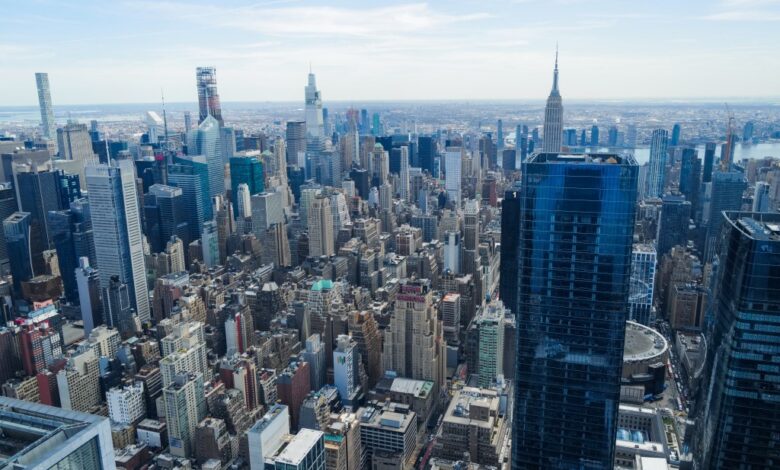REBNY data shows healthy office occupancy, nearing pre-pandemic levels

Never mind foreclosures and predictions of doom. The Real Estate Board of New York’s latest analysis of office building “visitations” presents a less pessimistic take on the endlessly discussed and debated commercial property market.
The past few months saw Manhattan office attendance continue its slow recovery as more companies call their employees back to their desks.
The office market crisis is too often blamed on work-from-home. In fact, landlords are mainly squeezed between the crushing forces of high interest rates and less demand for space as companies downsize and consolidate.
REBNY cites current office attendance as a percentage of pre-pandemic 2019, when (contrary to widespread misconceptions) offices were much less than 100% full on any given day — due to the fact that some employees already worked from home and others were absent due to business travel and vacations.
According to REBNY, Manhattan office attendance in March reached 74% of 2019 levels and 75% of it in April. Both rates were higher than 70% in March of 2023.
The rates are based on Placer.ai location data in 350 major Manhattan buildings, compiled from cellphone data.
The report from Keith DeCoster, REBNY director of market data and policy, found that:
* The best, Class A-plus properties saw 82% visitation rates (relative to 2019) in March and 89% in April. But visitation was a healthy 72% even in Class B and C buildings.
The high occupancy in “trophy” buildings should be no surprise. We’ve reported that locations such as One Vanderbilt, One Bryant Park, One World Trade Center and several Hudson Yards towers have seen up to 95% daily attendance.
DeCoster said, “We are seeing office activity incrementally edge closer and closer to pre-pandemic levels, led by the highest quality properties.”
* Average visitation was not surprisingly highest in Midtown with 76% and 78% in March and April. Downtown, rates improved from 54% in February to 66% in March and April.
REBNY senior VP for policy, Zach Steinberg, clarified that attendance data include visitors to retail stores inside office buildings, a fact that was not made fully clear previously.

“We’re considering a building’s entire ecosystem,” Steinberg explained.
But didn’t that skew the office data? “No, because our data for 2019 also included visitors to stores and restaurants in office buildings, so we’re still comparing apples and apples.”
A recent survey by the Partnership for New York City had similar findings.
The organization, which canvasses 130 major employers, found that between April 19 and May 6, office attendance was 72% of pre-pandemic levels.
So much for “barometers” which claim that only half as many people are working in offices as in 2019.




